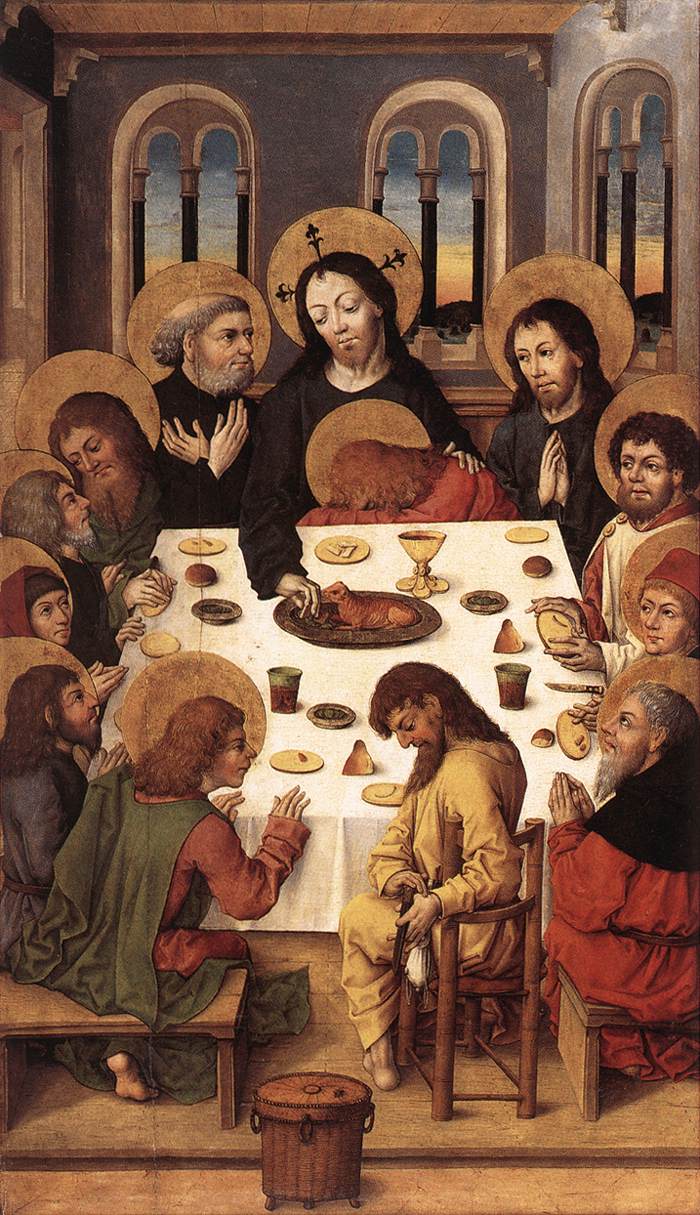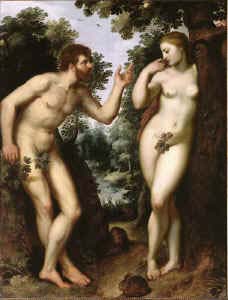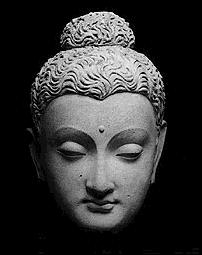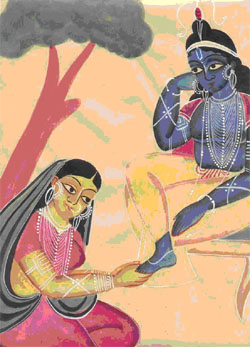Sunday School

The concept of the Sunday School as a function of parish work, although it may have had some earlier antecedents, is generally attributed to Robert Raikes who, in 1780, engaged four women to teach the children of Gloucester, England basic Christian doctrine and practice.
Posted by admin on June 14, 2006
Vipassana
A Buddhist term in Pali usually translated as "insight" or "inward vision". Vipassana is one of the two chief factors in attaining enlightenment.
Posted by admin on June 08, 2006
Weltschmerz
Weltschmerz (from the German meaning world-pain or world-weariness) is a term coined by the German author Jean Paul and denotes the kind of feeling experienced by someone who understands that the physical reality can never satisfy the demands of the mind.
Posted by admin on June 02, 2006
Ephpheta
The word of healing used by Jesus in the cure of a deaf-mute. It derives from the Aramaic for "open".
Posted by admin on May 26, 2006
Abhasvaras
In Sanskrit, the term signifies "the Shining Ones." It is applied in Hinduism to a group of sixty-four deities attendant upon Siva, who dwell in an ethereal dimension of being and preside over enlightenment.
Posted by admin on May 15, 2006
Maya
This Sanskrit term refers to the illusoriness of the empircal world. It has ties with Plato's teaching that "the world is not a mere hallucination; it is, rather, reality seen in a distorted fashion so as to hide the divine unity behind all phenomena.
Posted by admin on May 04, 2006
Chaburah

A Jewish practice whereby a group of friends join together, e.g., on the evening before the Sabbath, partly to prepare for the proper observances, partly for friendly conversation. Jesus may have conducted such a gathering with his disciples on the night of the Last Supper.
Posted by admin on April 20, 2006
toiora

One of the four divine elements that the indigenous members of New Zealand, the Maori, believed to exist within each individual. It refers to the inborn, eternal principle within us all.
Posted by admin on March 29, 2006
Discalced
This term, meaning "shoeless", is used of certain religious orders whose members wear no shoes, following a primitive practice among eastern monks that Francis of Assisi revived in the West. The practice usually represents a stricter observance of the spirit of the order to which they belong.
Posted by admin on March 23, 2006
Illuminative Way
In the mystical journey toward union with God, several schools of Christian mysticism recognize a stage intermediate between the purgative and the unitive ways. In that intermediate stage the soul finds itself cleansed and purified of attachment to things of sense and so prepared to proceed to spiritual enlightenment or illumination.
Posted by admin on March 08, 2006
Amsterdam Assembly
An assembly of ecclesiastical leaders who met in 1948 in the Concertgebouw and formerly constituted the World Council of Churches.
Posted by admin on February 21, 2006
Lotus
This is one of the most important symbols of Buddhism, standing for such elements of the religion as spiritual unfolding, development, growth, meditation, purity, enlightenment, and even Buddhahood itself. The lotus is also prevalent in the Hindu tradition, seen as a symbol for divine beauty.
Posted by admin on February 08, 2006
Pleroma
This term is used by Christians and Gnostics in allusion to the euphoria of being “fully in the stream of divine life”, which is more than capturing mere fleeting glimpses, but to be enjoying it in its plenitude.
Posted by admin on January 31, 2006
A term coined by the German Protestant Theologian, Rudolf Otto, to describe that which is wholly other; the essential element in religious experience that includes a sensation of awe as well as unworthiness in the face of the divine.
Posted by admin on January 10, 2006
Alchemy
Alchemy is an early scientific practice combining elements of chemistry, physics, astrology, art, semiotics, metallurgy, medicine, and mysticism. The three common goals of alchemists were to transform metal into gold or silver, create a “Panacea” remedy that supposedly would cure all diseases and prolong life, and to create human life.
Posted by admin on December 19, 2005
Tat Tvam Asi
This Sanskrit phrase, meaning "Thou art that", is used in Hinduism as a mantra to represent the fundamental identity between the microcosm and the macrocosm. Tat refers to brahman, the universal principle; tvam (thou) is the atman, the individualized aspect thereof. From a Hindu perspective, the phrase reflects the selfless attitude of the ethical person, who sacrifices individual self for the sake of all others.
Posted by admin on December 02, 2005
Hosso
Hosso is a Japanese school of Buddhism whose philosophy was a mixture of both realism and idealism. They believed that ultimate reality is to be found in the mind or “store-consciousness” of each individual. Although the original tradition has all but died, its “Conscious-only” teachings made a significant impact on various native East Asian traditions that would later develop.
Posted by admin on November 22, 2005
Supralapsarianism/Infralapsarianism

Supralapsarianism is the idea that God planned the fall, while Infralapsarianism is the idea that God merely foresaw, and hence permitted or merely reacted to the fall. Further ideas on the matter, relating more with infralapsarianism, is that the Fall was a consequence of the failure of humans to fulfill their responsibility, a responsibility in which God could not interfere with lest he devalue the free will of Man.
Posted by admin on November 08, 2005
Pandit

In Hinduism, a man or woman recognized for their wisdom and sought out for council. A pandit may function much in the same way as a Jewish Rabbi, however it is commonly attributed to the musically gifted.
Posted by admin on October 26, 2005
Vaijayanta
Vaijayanti is the word on Indra's banner, meaning “victorious”.
Posted by admin on October 13, 2005
Dar-e-Mehr
A North American term used by the Zoroastrian faith to refer to their house of worship. It literally means "a portal to all that is good: charity, devotion, kindness and love."
Posted by admin on October 04, 2005
Mytheme
In the study of mythology, a mytheme is a shared element between two or more mythologies, thus signifying the possibility of a shared source.
Posted by admin on September 20, 2005
Animism

An ancient belief, especially held among Native American tribes, that a soul or spirit resides in all things, including inanimate objects and natural forces. In a future state this soul or spirit would exist as part of an immaterial soul. The spirit, therefore, was thought to be universal. Animism can also stand for the basic belief in a spiritual existence, or a greater reality than simply what is seen.
Posted by admin on September 16, 2005
Ubermenschlichkeit

As theorized by philosopher, Friedrich Nietzsche, man experiences life through two opposing forms: the Apollinian and Dionysian tendencies. The Dionysian consists of the raw universe and its boundless energy, while the Appollinian is merely Man's filter in which we use to interpret or understand this reality. Nietzsche’s idea of Ubermenschlichkeit was that of the "whole man", the individual who has achieved perfect synthesis between his two contrasting sides of passion and reason, irrational and rational, unconsciousness and conscious, inspiration and manifestation. Such a man would have accomplished what was referred to as "the union of opposites".
Posted by admin on September 08, 2005
Janmashtami

Janmashtami is the birthday of the Lord Krishna as celebrated by members of the Hindu faith in the August/September months on the 8th day of the dark fortnight in the month of Bhadon, throughout the whole of north India.. During this holiday, temples and homes are brightly decorated and “cribs” representing the life of Lord Krishna are constructed. Janmashtami celebrations, which usually extend for an entire month, also include feasting, singing, and dancing.
Posted by admin on August 30, 2005
Insufflation
The action of breathing on a person or thing to symbolize the action of the Holy Spirit.
Posted by admin on August 26, 2005
Ora et Labora
This latin term, meaning “Prayer and Work”, is a Benedictine tradition supporting the communal standards of a shared spiritual life. One such example is the Taizé community of France who invite all men to live and pray with them as long as they are willing to share the day to day responsibilities and remain respectful of other members.
Posted by admin on August 19, 2005
Wu Wei

Wu wei is a significant canon of the eastern practice of Taoism that involves achieving a certain wisdom of knowing when and when not to act. It’s literal translation is “without action” and is often included in the paradox wei wu wie, which means “action without action” or “action through inaction”. It is said that when wu wei is mastered, a perfect equilibrium, or alignment, with the Tao is achieved creating an irresistible form of “soft and invisible power” over things (the self, others, one’s surroundings).
Posted by admin on August 12, 2005
Natalitia
This Latin term, meaning “birthday”, was used by early Christians in reference to the day on which a faithful died and passed on to the greater and everlasting realm of life.
Posted by admin on August 08, 2005
Inner Light

This principle, upheld by the Society of Friends (Quakers), refers to the source within each man and woman where a divine wisdom derives from revealing to us our true condition.
Posted by admin on July 18, 2005
Hylozoism
This is the doctrine that life inheres in all matter, sometimes expressed through though differing from the concept of a “world soul”.
Posted by admin on July 07, 2005
Satori
A Buddhist term meaning a state of sudden spiritual enlightenment.

Posted by admin on June 30, 2005
Syzygy

(From the Greek syzygia meaning ‘pair’) A Gnostic term often used to designate a pair of cosmological opposites, male and female respectively. The concept has affinities with the Chinese yin/yang.
Posted by admin on June 24, 2005
Panentheism
This term, literally meaning “everything in God”, was coined by K.C.F. Krause (1781-1832) and is used to designate the belief that the Being of God includes and penetrates the entire universe in such a way that everything exists in Him. Unlike pantheism, panentheism does not say that the universe is all there is to God, however that the universe is only the material portion of God, and that there is more to Him beyond.
Posted by admin on June 21, 2005
Miko

Of Shinto faith, he miko are dedicated servers of the shrines, who have undergone a strict training and extended vow of chastity in preparation for their duties. Miko are generally classified as either kamiko (ministers of the gods), who are trained to assist the Shinto priests and to perform the sacred dances, or the ichiko, who have a more shamanistic vocation with functions similar to those of mediums in spiritual circles.
Posted by admin on June 14, 2005
Forbidden Fruit

Appearing in the bible, the forbidden fruit is the fruit of the “tree of knowledge of good and evil”, of which Adam and Eve prematurely indulged in and thus establishing their fall from Grace. This phrase is also used in reference to anything that is tempting but potentially dangerous or harmful, particularly relating to sexuality. Theologians range in their interpretations of this ancient narrative, some acknowledging it as a simple and literal “eating of the fruit” while others see it as more of a symbolic action directly related to the loss of innocence or purity.
Posted by admin on June 06, 2005
Ethnocentrism
This term, coined by the social evolutionist William Graham Sumner in the late 1800’s, is the tendency to look at the world primarily from the perspective of one's own culture, race, or ethnicity. This then carries with it the viewpoint that one’s own group is superior and at the center of everything. Occurring in every culture, it, ironically, may be the one thing all cultures have in common.
Posted by admin on June 03, 2005
Arianism

Arianism is an early Christological view. It argues that Jesus Christ the son, and God the Father are not from eternity one. Arians believed that Jesus was the son of God, but not God the Father. Arius and his followers came to be branded heretics, and eventually were exiled from Alexandria by Constantine.
Posted by admin on May 25, 2005

Also known as Visakah Puja or Buddha Purnima in India, Vesakh is the holiest occassion on the Buddhist calendar, commemorating the birth, enlightenment, and death of Gautama Buddha on the first full moon of May. The holiday is typically celebrated with feasting, sacred chants, fasting, and a special ceremony which consists of a massive release of caged birds.
Posted by admin on May 20, 2005
Jiva and Ajiva

According to Jainism, the universe is comprised of two basic elements. There is the Jiva, which is extremely light, luminous, and self-subsisting, and there is the Ajiva, matter which creates a “shell” around the Jiva and therefore obscures its truer nature. The idea was to gradually shed the Ajivic matter through intense self-discipline and implementation of certain cherished principles. When this shell had been completely shed, the Jiva could then float freely to the top of the universe and be its perfect and purer self.
Posted by admin on May 10, 2005
Ridvan

Ridvan is a Bahá'í term meaning paradise, good pleasure, and splendor.
Posted by admin on May 03, 2005
Abbey/Cathedral

An abbey refers to a monastery, supervised by an abbot, or a convent, supervised by an abbess, or a church that was once part of a monastery or convent. The term cathedral, in its primary definition, is given to a significant church building in which houses some sort of significant or authoritative presence, particularly a bishop.
Posted by admin on April 27, 2005
Dhamma-vinaya

The Buddha — the "Awakened One" — called the religion he founded Dhamma-vinaya — "the doctrine and discipline". To provide a social structure supportive of the practice of Dhamma-vinaya (or Dhamma for short [Sanskrit: Dharma]), and to preserve these teachings for posterity, the Buddha established the order of bhikkhus (monks) and bhikkhunis (nuns)— the Sangha — which continues to this day to pass his teachings on to subsequent generations of laypeople and monastics, alike.
Posted by admin on April 23, 2005
Sede vacante
In the canon law of the Roman Catholic Church, this term refers to the vacancy of the Episcopal seat of a particular church, most recently the Holy See itself during the period between the death of Pope John Paul II (April 2, 2005) and the Installation of Pope Benedict XVI (April 19, 2005).
Posted by admin on April 20, 2005
Papal Conclave

Since 1059 it has been the duty of the College of Cardinals to elect the position of Pope, and since 1274 it has been their duty to do such in seclusion. This private meeting is known as the conclave, the term stemming from the Latin phrase cum clavi “with a key” referring to the locking away of the electors during this process. Today, the conclave takes place inside the Sistine Chapel in the Palace of the Vatican.
See Father Moon's Letter to the Vatican
Posted by admin on April 05, 2005
Krishna and Murti

Krishna, “Sanskrit” for “black” or “dark blue”, is the Supreme Lord of Hinduism, from which all other incarnations of God emanate.
Murtis are statues or images, commonly depicting significant Gods or Goddesses, used by Hindus during services of devotion or meditation. It is a way of giving form to the otherwise abstract or distant identity of God.
Posted by admin on April 01, 2005
Taqlid
Literally this means 'follow' (someone) or 'imitate'. In Islamic legal terminology, it means to follow a mujtahid - a person who is an expert of Islamic jurispudence.
Posted by admin on March 25, 2005
Norooz
Norooz is the Iranian new year festival. The word itself literally means "new day" in Persian language and the festival marks the beginning of the solar year as well as the new year on the Iranian and several other national calenders. At its core, the Noroozfestival celebrates the awakening of the natural life. This awakening symbolizes the triumph of good, winning against the evil forces of darkness that are represented by the Winter.
Posted by admin on March 21, 2005
Lent
[Old Eng. lencten,=spring], Latin Quadragesima (meaning 40; thus the 40 days of Lent). In Christianity, Lent is a time of penance, prayer, preparation for or recollection of baptism, and preparation for the celebration of Easter. Observance of Lent is as old as the 4th cent. In Eastern churches it is reckoned as the six weeks before Palm Sunday. In the West the penitential season begins liturgically with Septuagesima, the ninth Sunday before Easter
Posted by admin on March 14, 2005
Ecstasy
Religious ecstasy is an intensified spiritual state, deliberately sought through the various mediums which include prayer, meditation, specialized breathing, fasting, thirsting, and even dancing. The ecstatic experience is one of an expanded mental or spiritual awareness that is often accompanied by visions, deepened thought patterns, and even physical or sexual euphoria.
Posted by admin on March 08, 2005
"The Dreaming"
The name given to the complex belief system of Australian Aboriginals. It is a very life-minded spirituality based on the sacred character of the land. Although it also refers to creation stories of ancestral spirits, Aboriginals have a cyclical view of time and use The Dreaming as a guide for every aspect of daily life.
Posted by admin on February 28, 2005
Taralabalu Hunnime
These words are in Kannada, the native language of Karnataka State. “Tarala Balu” means “Long Live! My Lad! and “Hunnime” means “Full moon day”.
Posted by admin on February 24, 2005
ANANYA BHAKTI OR RAJASIC BHAKTI
Exclusive devotion to a particular deity; for example, Tulasidasa's devotion to Sri Rama. (Though the dividing line between exclusive, passionate devotion and bigotry is very thin, Ananya Bhakti does not lead to intolerance.
Posted by admin on February 22, 2005
Triodion
Orthodox Christian time period leading up to Lent. The liturgy involves hymns, odes and scriptures. Begins on February 20, 2005
Posted by admin on February 21, 2005
Anagogical Interpretation
A type of allegorical reading of the Bible designed to lead the reader upward toward a spiritual, mystical understanding.
Posted by admin on February 04, 2005
Abba
Stemming from Aramaic roots, abba is almost the equivalent of the current children’s utterance, “dada”. Its usage in Mark 14.36 of the Holy Bible, in attribution to Jesus, implies the closeness and intimacy of God and his children. Thus, the phrase ignites the theme which portrays the Creator as a Heavenly Father who invites his sons and daughters to serve him with the innocence of a loving child.
Posted by admin on February 01, 2005
Chiliasm
Also known as millennialism, it is the belief that there is a future 1000 year reign of Christ where perfect peace will take place and the Lord Jesus will be King on earth.
Posted by admin on January 26, 2005
Sin
This term is almost entirely used in a religious context, usually describing any lack of conformity to the will of God. What falls, therefore, as sin or as justifiable varies largely from religion to religion and how separate faiths interpret the will or favor of their creator. Also, different faiths usually have differing standards of severity regarding the various shared religious crimes.
Of course, most are aware of the seven deadly sins, a famous list ranking the worst spiritual crimes capable, in order from severest to least (as per Dante’s Divine Comedy):
1. Pride (vanity)
2. Envy (jealousy)
3. Wrath (anger)
4. Sloth (laziness)
5. Avarice (covetousness, greed)
6. Gluttony
7. Lust
Posted by admin on January 18, 2005
Spiritual Assembly
As there is no clergy in the Bahá'í Faith, Bahá'í communities are governed by freely elected nine-member councils called Local Spiritual Assemblies, who, themselves, govern under National Spiritual Assemblies. Uniquely, there is no system of candidature, electioneering, or campaigning; the purpose being to elect members who best embody the spiritual qualities that would most enable them to serve their community.
Posted by admin on January 11, 2005
Dukkha
Found within the contexts of the Four Noble Truths, the Three Marks of Existence, and the Noble Eightfold Path, dukkha is one of the central ideas to the practice of Buddhism, basically translated as suffering, affliction, pain, and discomfort. Siddhartha Gautama, the religion's founder, was frequent to proclaim that the only purpose of Buddhism is to satisfy the objective of eliminating all dukkha from one's life.
comments (0)
Posted by admin on January 05, 2005
Mahatma
Though many people mistake Mahatma as the first name of the famed pacifist, Gandhi, it is actually a Hindu title of respect given to enlightened persons known for their wisdom, spirituality, and great love for humanity. Gandhi’s actual first name is Mohandas.
Posted by admin on December 28, 2004
Dualism
The basic definition of dualism, the state of being dual or having a twofold division, appears in various contexts including philosophy of mind and philosophy of science, as well as in theological circumstances where its intendment slightly differs between the traditional Eastern and Western practices. In both hemispheres, dualism generally refers to the belief that there are two basic universal principles working in either polar opposition of or ideal congruence with each other. For example, the Western idea of God’s and Satan’s competing governance of the world demonstrates oppositional dualism, whereas the Eastern observance of parts Ying and Yang exemplify a supportive dualism. (Note: neither of these two examples were meant to reflect their respective region's attitude regarding religion, nor do they necessarily represent either sides' favoring appliance of the term "dualism".)
comments (0)
Posted by admin on December 20, 2004
Menorah
The Menorah is an 9 armed candelabrum used in Judaism for the Hannukah festivals. On each night of Hanukkah, the menorah is lit to commemorate a miracle which occurred after the Jews proclaimed victory over the Syrian armies in 165 B.C.E. When Jews came to rededicate the Temple—which had been defiled by the Syrians—they found only one small flask of oil with which to light the menorah. This flask contained only enough oil for one day, yet the lamp burned for eight days (by which time a fresh supply of oil was obtained). On the first night of Hanukkah, one light is lit. On each successive night a light is added until the eighth night, when all the lights are lit. The addition of light recalls the greatness and growth of the miracle. Candles are placed in the menorah from right to left, but lit from left to right. The highest candle, known as the Shamash or "servant", is used to light the other candles. Blessings are recited each night before the lights are kindled.
Posted by admin on December 15, 2004
Ka'Ba
The Arabic word Ka'Ba means house of Allah. The Ka'Ba is a cube-like building constructed of blocks of Meccan granite. The Ka'Ba stands at the center of the great open-air Mosque of Mecca, the masjid al-haram. It constitutes the Qiblah, the specific point which Muslims face when performing the daily ritual prayers. The Ka'Ba is the center of the world for Muslims. It is "the navel of the earth," the first creation of Allah and the beginning point of all creation. Muslim cosmology locates it on the same axis with seven Ka'Bas directly above it in the seven heavens. These Ka'Bas, earthly and celestial, are directly below the throne of Allah, which is circumambulated by the angels (Mala'Ika) even as the Meccan Ka'Ba is circumambulated by humans.
Posted by admin on November 23, 2004
Salvation
Salvation may be understood as being safe from destructive forces and as an act of deliverance from destruction, pain, loss, death, sin, curse, punishment or suffering. The Latin salus and French salut, which mean whole or healthy, imply the notion of salvation as healing, a metaphor found in many religious traditions. The human predicament of sin, death, ignorance and impurity is an illness from which salvation brings "healing". This meaning is also evident in the German Heil (Healing or salvation) and heilig (Sacred or holy). Salvation implies such concepts as whole, healthy, strong vigorous, enjoying well-being and bliss. The concept of salvation, in this sense, points back to a period in which no distinction was drawn between bodily healing or deliverance from this worldly needs and the bliss hoped for ultimately in the heavenly realms. In fact, it was the worldly deliverances that were primary to human religiousness and provided the metaphors and imagery of absolute salvation that emerged in Christianity, Judaism, Islam, Zoroastrianism, Hinduism and Buddhism.
Posted by admin on November 17, 2004
Mufti
In Islamic law, a Mufti is an "attorney" who writes his opinion (futwa) on legal subjects for private clients or to assist judges in deciding cases. The recorded opinions of the muftis are a valuable source of information for the actual working of Islamic law as opposed to the abstract formulation. Only in the fields of marriage, divorce, and inheritance are the futwas binding precedents; on other subjects they might be set aside.
Posted by admin on November 11, 2004
Bar Mitzvah
Bar Mitzvah is a Hebrew term which means “son [daughter] of the commandment”, meaning one who is obliged to fulfill the commandments of the Torah. The term denotes the arrival at religious and legal maturity and the occasion on which this status is formally assumed and celebrated. Talmudic law designates the age of religious and legal responsibility for boys as thirteen years plus one day, and for girls twelve plus one day.
Posted by admin on November 10, 2004
Archangel
Arch- is a greek prefix which is applied to a person or institution that has preeminence over other persons or institutions. Archangels are thereby ruling angels. In its wider meaning, any angel of higher rank, thus all the higher orders of angels. Saint Michael, therefore, is called Archangel although he is the prince of the Seraphim. In its more restricted sense, the archangels are those blessed spirits who compose the second choir of the lowest order in the angelic hierarchy. As distinct from the guardian angels, the archangels are God's messengers to man in matters of graver moment, e.g., Gabriel to the Virgin Mary, Raphael to Tobias; and to the archangels God entrusts the care of persons of exalted rank or sanctity.
Posted by admin on November 01, 2004
Sunyata
Sunyata is Sanskrit and means “emptiness” or “openness”. In early Buddhism as found in the Pali Nikayas, emptiness referred primarily to worldly experience; the changing flux of existence was said to be empty of lasting value and self-established being. Later some Buddhists stressed the emptiness of all experiences. They claimed not only were conventional notions and sense objects empty of ultimate reality, but also empty were such religious concepts as Buddha or Nirvana and the explanations of the Buddhist scholars. In the continued effort to probe the depth of emptying oneself there was the recognition that there were different levels of knowing, some more free, others more entangled with illusion. At the deepest level of freedom there was no longer attachment to a discriminating mentality, which meant that any notion or act was empty of inherent good or bad.
Posted by admin on October 19, 2004
Ramadan
Ramadan is the month of fast throughout the Islamic world. It is the ninth month of the Islamic lunar calendar, traditionally believed to be the month in which the first revelation of the Qur'an was given. It appears that Muslims adopted the practice of fasting during the early years following the Hijra in 622 A.D. and that they initially followed Jewish custom as to the time and manner of fasting. This year Ramadan begins on October 15th.
Posted by admin on October 14, 2004
Jiva
Jiva is Sanskrit and means life or life-principle. It is a Jaina term for the immaterial soul of each sentient being; one of two basic categories into which the Jainas place all existing things, the other being ajiva, that which is existent but not sentient or conscious. The human existence is the result of a Jiva becoming associated with, or bound up in ajiva or particular matter by the means of Karma, which the Jainas interpret as a special, subtle form of matter which clings as it were to the Jiva. The accumulated Karma causes the Jiva to be limited to a particular physical incarnation.
Posted by admin on October 12, 2004
Ar-Rahman
With the exception of one Sura (the ninth), all Suras of the Koran begin with praising God as the merciful. This introduction is called the Basmala: "In the name of Allah the Giver-of-Mercy (Ar-Rahman), the Merciful (Ar-Rahmin)."
Posted by admin on September 24, 2004
Ajivikas
An Ajivika is one who practices a certain mode of livelihood or prefession. It was perhaps originally used with sarcastic or derogatory intent. The Ajivakas was an ascetic movement in India (sixth century BC to fourteenth century AD) which was noted for its strict determinism. The founder was Maskarin Gosala, a contemporary of Buddha and at one time a colleague of Mahavira, the Jaina teacher and founder.
Posted by admin on September 17, 2004
Martyr
Martyr is a greek word which means to give witness or testimony. It has both legal and moral connotations of witness to facts, events, personal character, received teaching or revealed truth. In the Christian tradition it refers to the witness by Jesus’ disciples to his life, death and resurrection. The more particular meaning, one whose testimony for Christ results in death at hands of unbelievers, is indicated in later New Testament writings. Jesus himself, the “faithful witness”, was the very model of martyrdom. According to different estimates 10,000 to 100,000 Christians lost their life as Matyrs in the first three centuries of Christianity.
Posted by admin on September 15, 2004
Qisas
Qisas is Arabic and means retaliation. It is the legal principle for either killing or wounding. In contrast to the blood feud of pre-islamic Arabian tribes, the Koran limits the vengeance to which a person is entitled. Sura 5,45-49 recognizes this principle in the Torah, and adds that expiation will result from foregoing it. Muhammad himself advised many followers to forgive and accept a money payment as compensation.
Posted by admin on September 13, 2004
Samsara
During the period in which the Upanishads were written, Hindu philosophers began to develop the concept of samsara in line with other aspects of Upanishadic thought. Samsara literally means going through or flowing. The Hinduism of the the Samhitas looked on the material world as understandable and controllable; it was in the material world that the gods (devas) gave to humans that the gods could be controlled through hymns, prayers, rituals, and sacrifices. But the Upanishadic Hindus began to think of the world as illusion (maya); reality (Sat) was rather to be sought in the unchanging and unitary principle of the universe. The material world, on the other hand, was a place fragmented and constantly changing; this changing aspect of the universe came to be called samsara.
Posted by admin on September 10, 2004
Patimokkha
The Pali word literally means “that which binds”. The Patimokkha is the Buddhist code of rules governing the monastic life for monks and nuns. Part of the canonical Book of Monastic Discipline (Vinaya Pitaka), the Patimokkha arranges the rules according to the severity of the offense incurred in their violation. The entire Patimokkha is recited during a ceremony held at the fortnightly assembly (Uposatha) of Theravada monks on the day of the new and the full moons.
Posted by admin on September 08, 2004
Infallibility
The inability to err in teaching revealed truth, claimed by the Roman Catholic church in Vatican councils I (1870) and II (1962-1965) to belong to the church by the will of Christ (Luke 22,32 and John 16,13) and applicable in clearly specified circumstances to certain judgments of the pope speaking Ex Cathedra (from the chair, the symbol of the teaching authority) and the body of bishops in communion with one another and with him, either dispersed throughout the world or gathered in ecumenical council. The object of an infallible definition must be a doctrine of faith or morals proposed absolutely and definitely to be held by the whole church.
Posted by admin on September 03, 2004
Adi Granth
Adi Granth is the sacred scripture of the Sikhs; traditionally referred to as the Granth Sahib (Book of the Lord). The prefix Adi (first) is affixed to distinguish it from the Dasam (tenth) Granth, a compilation made by the tenth Guru, Gobindh Singh. While the Dasam Granth is treated with reverence, only the Adi Granth is accorded scriptural status and regarded as the “living” embodiment of all the ten gurus. March 14th is Guru Granth Sahib Day and August 30th is Completion of Guru Granth Day.
Posted by admin on August 30, 2004
Nabi
Nabi means prophet in Arabic. A prophet is a man sent by God with a certain task. Most prophets had foreknowledge of their ability to do the extraordinary or unexpected and they performed miracles (mu’jizat) as proofs of their divine mission. In Islam all the prophets of the Torah and the new Testament are accepted as prophets, although Abraham, Moses and Jesus are considered more important than for instance Aaron, Elisha or Lot. Muhammad is regarded not only as the greatest of the prophets, but also as the seal of the prophets, that is, the last of the prophets, who authenticates the messages of the prophets before him.
Posted by admin on August 26, 2004
Selihot
Selihot means Forgivenees in Hebrew. The term Selihot describes liturgical poetry or prayers of pardon recited on the Ten Days of Penitence, Rosh Ha-Shanah, Yom Kippur as well as public fasts, calling the Lord to respond as he did to scriptural heroes. The earliest known order of Selihot is found in the ninth century prayer book of Rabbi Amram.
Posted by admin on August 25, 2004
Resurrection
Resurrection is the transformation from dead to living. It is not the restoration of the status quo ante (as for example Lazarus was brought back to life) nor is it the same as reincarnation but the transformation of the whole self to a new state of life after death. Although the concept of resurrection roots in the Hebrew Bible, only in Christian Theology has it been central as through the resurrection of Jesus. Resurrection is not a miracle but an eschatological event that marks the transition to a New Age destined to replace history. For many Christian resurrection has also become a metaphor for the transition that takes place within a believer who finds faith in Jesus Christ.
Posted by admin on August 13, 2004
Four Virtues
In the beginning of a text of Mencius (also known as Meng Tzu, the most important Confucian philosopher after Confucius), Mencius comes to visit the ruler of Liang who asks him what value he would be able to provide to the state. Mencius starts criticizing the utilitarian thinking of the Ruler of Liang. He instead tells the Ruler of Liang to think of humaneness and lawfulness (Jen and I). These two terms never appeared in this combination in the writings of Confucius but later became known as slogans of Confucianism. The positive anthropology of Confucianism goes back to Mencius and these two terms. He believed that men were generally good and since birth possess four characteristics: pity (compassion), sense of shame, disgust (of wrong deeds), modesty and reservation or discretion as well as the ability to discern between right and wrong. These characteristics are the four beginnings that lead to the four virtues, that are thereby also part of human nature: Humaneness or Jen (compassion), Lawfulness I (Sense of shame and disgust of wrongdoings), Sense of morality Li (modesty and reservation or discretion) and Inteligence (or brightness) Chih (the ability to discern between right and wrong).
Posted by admin on August 10, 2004
Love
Love is not blind - it sees more, not less. But because it sees more, it is willing to see less.
- Rabbi Julius Gordon -
Love is an act of endless forgiveness, a tender look which becomes a habit.
- Peter Ustinov -
Posted by admin on August 06, 2004
Adi Granth
Adi Granth is the sacred scripture of the Sikhs; traditionally referred to as the Granth Sahib (Book of the Lord). The prefix Adi (first) is affixed to distinguish it from the Dasam (tenth) Granth, a compilation made by the tenth Guru, Gobindh Singh. While the Dasam Granth is treated with reverence, only the Adi Granth is accorded scriptural status and regarded as the “living” embodiment of all the ten gurus.
Posted by admin on July 16, 2004
Tapas
Tapas is Sanskrit and means Heat or Warmth. In the Rig Veda Tapas is a creative force, it is the essential element in the universe at the cosmic, solar, planetary and human levels. It also serves as a link between the physical and spiritual aspects of sacrifice (Yajna). Later with the emergence of the concept of Karma, Tapas became more associated with the energy emerging from ones deeds(Bhagaved Gita), that can either be virtuous, ambitious or perverted. The first is to gain nonattachment, the second is for personal gain or the attainment of Siddhi (extraordinary powers) and the last is for acquiring wordly power or gain. Tapas as self-discipline is an aid to enlightment in Hinduism, Buddhism as well as Jainism although each tradition varies in the degree of austerities encouraged.
Posted by admin on July 15, 2004
Sunyata
The non substantial and undependable quality of experience which is also seen as total freedom is called Sunyata in Sanskrit and can be literally translated into emptiness. The Buddhist tradition has sometimes stressed freedom from the phenomenal world, and at other times freedom to experience completely the richness of life. In either case Sunyata functions less as an attribute of ultimate reality than as a practical religious designation of the real possibility for ultimate fulfillment.
Posted by admin on July 14, 2004
Clergy
Clergy refers to the ordained leadership of the Christian Church. The word is derived from the Greek kleros, an object used in casting lots, such as those used by the jewish priests in Deuteronomy (Deut. 18:1 ff.), or those used in the selection of a successor to Judas Iscariot (Acts 1:17, 25-26). The word can also refer to an allotted portion, hence its use in I Pet. 5:3 of persons assigned to the care of elders.
Posted by admin on July 13, 2004
Messiah
Messiah is a Hebrew term which means “the anointed one”. In Judaism the rabbinic literature developed extensive discussions about the concept of the Messiah, which is a central eschatological concept. Although it is a post biblical concept there are many references in the bible about what can be called messianic phenomena. The coming of the Messiah, it is believed, will demonstrate the truth of Judaism to the world and usher in an era of universal peace, harmony and justice. Christianity, Islam, Buddhism and other religions developed their own messianic concepts.
Posted by admin on July 12, 2004
Bab
Bab literally means “Gateway”. It is the title claimed by Sayyid Ali Muhammad of Shiraz (1819/20 – 1850), founder of the new religion of the Babis. His religion had a strong eschatological focus upon a future figure called “He whom God shall Manifest,” later taken by Ba’hais to mean Baha Ullah; it also rejected many of the teachings of the Islamic Sharia and developed a distinctive metaphysics of its own. The Bab and his followers were severely persecuted by the Persian authorities, and he himself was imprisoned and then executed in 1850. His principal teachings are contained in the two Bayan, one each in Arabic and Persian.
Posted by admin on July 09, 2004
Tathagata
Buddha preferred this term above all others to refer to himself. The term means the “one who went the way”, meaning the one who went the way of enlightment.
Posted by admin on July 07, 2004
Kaddish
Kaddish means sanctification in Hebrew. Kaddish is a brief Aramaic Prayer, among the best known in Jewish liturgy. As an ancient prayer, it is spoken in Aramaic, so that all might understand this devotion which is frequently recited in the course of a service. Its central theme is the glorification of God. “May his great name be forever blessed” is read responsively.
Posted by admin on July 06, 2004
Guru Purnima
July 2nd 2004 is Guru Purnima day. Guru Purnima is traditionally held to be Bhagawan Vyasa's birthday. According to the Indian calendar it falls on the 15th of the month of Ashada. Bhagawan Vyasa is called Veda Vyasa - or the Compiler of the Vedas. Bhagawan Vyasa saw that, in the coming yugas (Eras of time), men would be of grosser mind and would lack the ability to learn and retain all of the Vedas. So he compiled the Vedas into four parts - the Rig, Yajur, Sama and Atharva Veda. Furthermore he wrote the Puranas so that the common people could also benefit from the knowledge of the Vedas - he conveyed the same spiritual principles through the medium of stories and parables. He is also the author of the Brahma Sutras , the quintessence of Vedanta.
Posted by admin on July 01, 2004
Gilgul
This Hebrew word literally means wave and is the technical term for reincarnation or transmigration of souls. Jewish philosophy unequivocally repudiated it, but from its first literary appearance in the Sefer Bahir it became a central doctrine in Jewish Mysticism. It is almost always understood to be an opportunity for souls to perfect themselves and to undo sins of earlier lives.
Posted by admin on June 30, 2004
Pitr
Pitr is a Sanskrit term which means “a father”. The plural Pitaras refers to a community of deceased ancestors, the forefathers of a particular individual or the progenitors of humanity in general. In Vedic Hinduism an elaborate system of Sraddha ceremonies evolved in which sustenance was provided for the deceased by way of regular offerings.
Posted by admin on June 29, 2004
Lila
Lila is Sanskrit and means “play” or “sport”. It refers to the idea in Hinduism, stressed by Vaishnavas, that the creating and controlling of the world by God is like the spontaneous and uncalculating self-expression of a sportsman or an artist. Lila is not used to suggest that God’s acts are frivolous, but that they are without self-interest and spontaneous. The lila doctrine continues and extends the ideal of selfless action taught earlier by the Bhagavadgita. The lila cosmology provides a theological ground, not fully exploited by Hindus, for delighting in the world as itself a product of God’s delight. A more common contribution of the idea has been assisting believers in accepting loss; all natural processes, dissolution as much as creation, are to be seen as the lila of the Lord, mysterious in nature but not devoid of intelligence and love. The lila thought is also found in Mahayana Buddhism, where Buddha is presented as a transcendent being playing or performing his life in order to guide and help human beings on their path to Nirvana. This idea is especially strong in the Lalitavistara (The Unfolding of the Play), an early Buddhist text.
Posted by admin on June 28, 2004
Hajj
At least once in the life of a Moslem he should do a pilgrimage to Mecca and Medina. This Pilgrimage is called Hajj and this year close to 2 million people traveled to the holy sites in Mecca and Medina.
Posted by admin on June 25, 2004
Alayavijnana
In Sanskrit Alayavijnana means “Storehouse-Consciousness”. In the Yogacara school, a storehouse of karmic impressions or “seeds”, which ripen into thinking, whereby each believes that it is a self. These individuations in turn produce new karmic seeds in an ongoing cycle of rebirths.
Posted by admin on June 24, 2004
Kalam
The arab word Kalam means speech or discussion. It is the word used for the Dogmatic theology in Islam, also known as ilm al-tawhid “The science of [the Divine] Unity”. One who does Kalam is a Mutakallim. In contrast to Christian theology the formal enterprise has never enjoyed a dominant position among the religious sciences. There has been considerable and varied theological activity in Islam, but legal and ritual issues have always played a more dominant role. The correct practice (orthoprax) has been more basic than the correct doctrine (orthodox), especially if the latter is understood primarily intellectually. The Qu’ran is itself a work of religious inspiration, not a theological treatise.
Posted by admin on June 23, 2004
Ar-Rahman
With the exception of one Sura (the ninth), all Suras of the Koran begin with praising God as the merciful. This introduction is called the Basmala: "In the name of Allah the Giver-of-Mercy (Ar-Rahman), the Merciful (Ar-Rahmin)."
Posted by admin on June 23, 2004
Beatitudes
The opening of the Sermon on the Mount consists of a series of congratulatory exclamations called Beatitudes. The formula “Blessed is the one who…” is a common formula in the Old Testament to extol virtues and teach morality.
Posted by admin on June 22, 2004
Kabbala
The Hebrew term Kabbala means tradition or inherited tradition. It is used for various forms of Jewish mysticism. The first esoteric doctrines in Judaism originated in Palestine during the Greco-Roman era. All subsequent elaborations and innovations in doctrine and practice are influenced by the diverse geographical, cultural and political environments that shaped postbiblical Jewish history. More specifically Kabbala refers to the dominant trend in Jewish Mysticism which is traced back to the 12th century in France and northern Spain.
Posted by admin on June 21, 2004
Ijma
Ijma literally means settling, resolving, agreement or concurrence in Arabic. In Islam the term is used for the Consensus of the Umma, the community, about any issue, especially about any God-given Norm for human life. In Sunni legal theory it is the third source of authority after the Quran and the Sunna for decisions on any questions.
Posted by admin on June 18, 2004
Ashrama
The Sanskrit term means "a stage in which one exerts oneself". In ones life a Hindu goes through 4 stages: 1. the student, 2. the householder, 3. the forest-dweller and 4. the renouncer. In each stage of life the Hindu exerts himself in different sets of religious and moral goals. First he learns. Upon marriage he becomes a householder. After raising his children he dedicates himself to his spiritual growth, studies the Vedas and withdraws from all desires. After reaching sufficient nonattachment he enters the final stage in which he seeks to achieve a condition of desirelessness within himself.
Posted by admin on June 17, 2004
Hosanna
Hosanna is a Hebrew term used in both Christianity and Judaism. It means “save, we beseech thee”. Hosanna was the crowds acclamation of Jesus on Palm Sunday, an adaption of Psalms 118,25. In Christianity it became an important term in Christian liturgy, a fixed part in the benedictus qui venit. In Judaism it is mainly used in prayer.
Posted by admin on June 16, 2004
Wahi Guru
The Sikh word for God is Wahi Guru. Guru Nanak, the founder of the Sikhs, believed God was Sat (Meaning both truth and reality) as opposed to Asat (Falsehood) and Maya (Illusion). Nanak based his principles of social behavior on his concept of God. If God is truth, to speak an untruth is to be ungodly. Untruthful conduct not only hurts one's neighbors, it is also irreligious. Guru Nanak's God was beyond description, because he was nirankar (formless). The best one could do is to admit the inability to define him.
Posted by admin on June 15, 2004
Askesis
The greek word askesis literally means to train or practice. Asceticism is the practice of self denial as a means of religious discipline. Different religions use different means to discipline and purify their soul; these can include fasting, celibacy and other physical and mental austerities. In some traditions austerities are performed to please the deity or to atone for the violation of divine commandments. In others there is the monastic life of poverty, chastity and obedience for the love of God and for the service of one’s fellowman.
Posted by admin on June 14, 2004
Guru
Guru means heavy or weighty in Sanskrit. In Hinduism a Guru is a teacher. This can be a teacher in any field, from Music to hunting. In popular Hinduism the term is often applied to a man or a woman acknowledged to be in deep union or communion with a deity. This individual may teach a particular technique for spiritual growth.
Posted by admin on June 11, 2004
Rachamim
Rachamim is a Hebrew word and means goodness, kindness, grace or compassion. In Rabbinic teaching middat rachamim (absolute rachamim) is one of God’s attributes. God in himself harmonizes maddat rachamim with middat ha-din (absolute strictness, austerity or harshness). Only through the right balance of both was he able to create a sustainable world. The combination of these extremes make God just.
Posted by geros on June 10, 2004
Ichthys
Ichthys is Greek and means fish. Early Christians, under the persecution of the Romans, used the symbol of the fish as a symbol for Christianity. The Greek letters create the phrase Iesus Christos Theus Yios Soter (Jesus Christ God’s son and savior).
Posted by geros on June 09, 2004
Zedaka
Zedaka means Leniency or charity in Hebrew. A Zaddik is a just and fair man, Zaddak means justice. Justice doesn’t mean a perfect application of the norm but an application of the norms valid for a community in a manner that is suitable and in solidarity to its members. It therefore also includes consideration of the weak and poor. In Judaism. Zedeka is a high virtue as expressed in Psalms 41,2 “Blessed is he who considers the poor”.
Posted by geros on June 08, 2004
Jen
Jen is Chinese and expresses the characteristic of a truly good person in Confucianism. It is often translated as "humane" or "human-hearted". It includes virtues like bravery, courtesy, loyalty and deligence in public life. Confucius regarded it as so transcendant that he was unwilling to say any of his contemporaries had achieved it.
Posted by geros on June 07, 2004
Trinity
The Dogma of the Trinity was formulated authoritatively in the fourth century church councils. The Dogma says that Christians worship one God in three persons (Father, Son and Holy Spirit) and one substance. June 6th is the Trinity day, a day where Christians honour the belief in one God.
Posted by geros on June 04, 2004
OM (AUM)
Om is a vedic syllable, termed the pranava (“the reverberation”). This word is used as a mantra for evoking within the reciter the highest form of Brahman or growth of spiritual power. The sound consists of three phonemes (a-u-m), which are identified with the three worlds, the three Vedas, the three states of consciousness, etc. The concluding silence symbolizes the “fourth”, the attainment of the highest self.
Posted by geros on June 03, 2004
Charis
Charis is the Greek word for Grace. It is an essential term in Christian theology. St. Paul describes charis as the Grace of God that justifies all sinners (Romans 1-3). The giving of Grace (Charisma) by God is personified through Jesus Christ. Theologians have argued whether God's Grace was attainable by merit or only as an act of mercy by God. Pelagius emphasized man's free will to do good and St. Augustine emphasized God's grace as a healing energy which liberates us to be free from sin and is initiated by God.
Posted by geros on June 02, 2004
Upaya
In order for Buddha to help his disciples to attain enlightenment, he sometimes needed to use clever tricks or skillful deception. In order to save children playing in a burning house for example, he would lure them out by offering them rewards, as they were not able to comprehend the danger they were in (Lotus-Sutra). These tricks were called upaya. In Mahayana Buddhism the term upaya became very important. Buddhas whole teaching or even his life, his appearance on earth, can be seen as an upaya, a means to help and guide us to attain enlightenment. This help becomes futile once we achieve its ends. It even becomes a burden, as we have to grow above it and should not be limited by it. As it is not the highest form of truth, but only an aid for us to comprehend our situation and to advance in our development. Like a boat used to reach the other shore, it should be left behind.
Posted by geros on June 01, 2004
Moksha
Moksha literally means release or liberation and is the most common used term for the ultimate goal of various Hindu systems of thought and practice, indicating release of the human self or spirit (Atman) from the cycle birth and death (Samsara).
Posted by geros on May 28, 2004
Umma
Umma is an arabic word and is used in the Koran to describe a community of people connected by religion, language or ethnicity. According to the Koran God sent a warner and a prophet to each Umma. The word Umma then developed to mean the community of all muslims, no matter race, nationality or language.
Posted by geros on May 27, 2004
Li
Li is a Chinese word which is mostly translated with ritual, although this is not an accurate translation. It can also be translated into rules of propriety or good form, principles, order or that which governs humans and things and brings order to matter or energy. In Confucianism it is used for the outward expression of goodness (Jen). The term Li is very important in Confucianism as well as Taoism.
Posted by geros on May 26, 2004
Shavuot
Shavuot is Hebrew and means "weeks". Shavuot is one of the three pilgrim festivals on which it was required in biblical times that all males visit Jerusalem. This year Shavuot is from the 26th to the 27th of May. Shavuot has 2 meanings. On the one hand it is known as the festival of the first fruit. In ancient Israel the first grain harvested was brought into the temple with joy and celebration. The other meaning is the celebration of the anniversary of Israel's receiving the Torah. Shavuot celebrates the receiving of the Ten Commandments by Moses.
Posted by geros on May 25, 2004
Punna
Punna describes the spiritual energy which results from good moral actions and which brings happiness in this or in future life, or rewards in heaven. Merit as the power of good karma, is important in Hinduism, Jainism and Buddhism.
Posted by geros on May 24, 2004
Bab
Bab literally means “Gateway”. It is the title claimed by Sayyid Ali Muhammad of Shiraz (1819/20 – 1850), founder of the new religion of the Babis. His religion had a strong eschatological focus upon a future figure called “He whom God shall Manifest,” later taken by Ba’hais to mean Baha Ullah; it also rejected many of the teachings of the Islamic Sharia and developed a distinctive metaphysics of its own. The Bab and his followers were severely persecuted by the Persian authorities, and he himself was imprisoned and then executed in 1850. His principal teachings are contained in the two Bayan, one each in Arabic and Persian.
Posted by geros on May 21, 2004
Infallibility
The inability to err in teaching revealed truth, claimed by the Roman Catholic church in Vatican councils I and II to belong to the church by the will of Christ (Luke 22,32 and John 16,13) and applicable in clearly specified circumstances to certain judgments of the pope speaking Ex Cathedra (from the chair, the symbol of the teaching authority) and the body of bishops in communion with one another and with him, either dispersed throughout the world or gathered in ecumenical council. The object of an infallible definition must be a doctrine of faith or morals proposed absolutely and definitely to be held by the whole church.
Posted by geros on April 20, 2004
Jiva
Jiva is Sanskrit and means life or life-principle. It is a Jaina term for the immaterial soul of each sentient being; one of two basic categories into which the Jainas place all existing things, the other being ajiva, that which is existent but not sentient or conscious. The human existence is the result of a Jiva becoming associated with, or bound up in ajiva or particular matter by the means of Karma, which the Jainas interpret as a special, subtle form of matter which clings as it were to the Jiva. The accumulated Karma causes the Jiva to be limited to a particular physical incarnation.
Posted by admin on April 16, 2004
|
|


